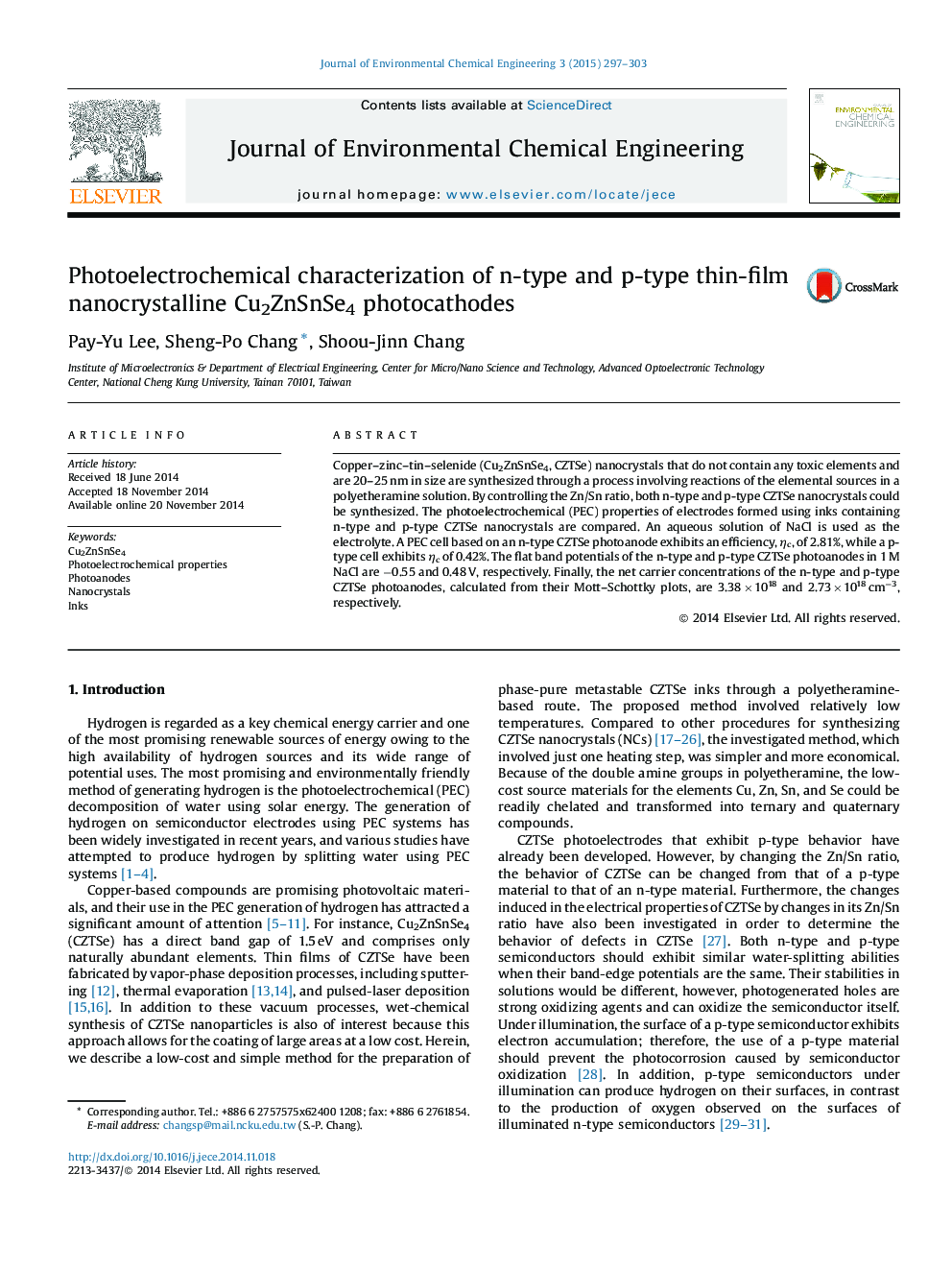| Article ID | Journal | Published Year | Pages | File Type |
|---|---|---|---|---|
| 222412 | Journal of Environmental Chemical Engineering | 2015 | 7 Pages |
•n- and p-type CZTSe nanocrystals were synthesized by controlling the Zn/Sn ratio.•Photoelectrochemical (PEC) characteristics of resulting electrodes were compared.•n-type CZTSe had higher solar conversion efficiency of 2.81%.•The flat band potential was −0.55 V for n-type CZTSe.•H2 (94.94%) was the main product of n-type CZTSe PEC cells.
Copper–zinc–tin–selenide (Cu2ZnSnSe4, CZTSe) nanocrystals that do not contain any toxic elements and are 20–25 nm in size are synthesized through a process involving reactions of the elemental sources in a polyetheramine solution. By controlling the Zn/Sn ratio, both n-type and p-type CZTSe nanocrystals could be synthesized. The photoelectrochemical (PEC) properties of electrodes formed using inks containing n-type and p-type CZTSe nanocrystals are compared. An aqueous solution of NaCl is used as the electrolyte. A PEC cell based on an n-type CZTSe photoanode exhibits an efficiency, ηc, of 2.81%, while a p-type cell exhibits ηc of 0.42%. The flat band potentials of the n-type and p-type CZTSe photoanodes in 1 M NaCl are −0.55 and 0.48 V, respectively. Finally, the net carrier concentrations of the n-type and p-type CZTSe photoanodes, calculated from their Mott–Schottky plots, are 3.38 × 1018 and 2.73 × 1018 cm−3, respectively.
Graphical abstractFigure optionsDownload full-size imageDownload as PowerPoint slide
